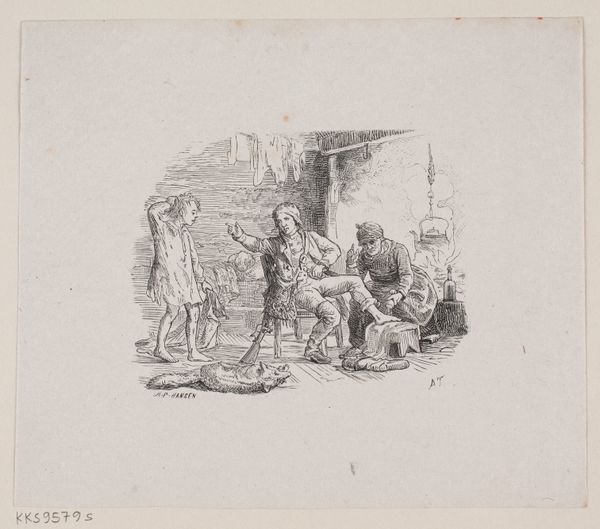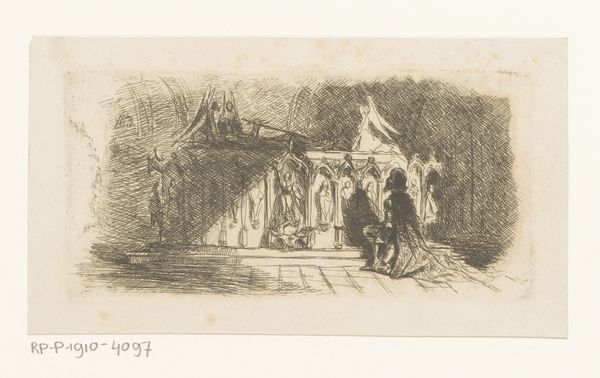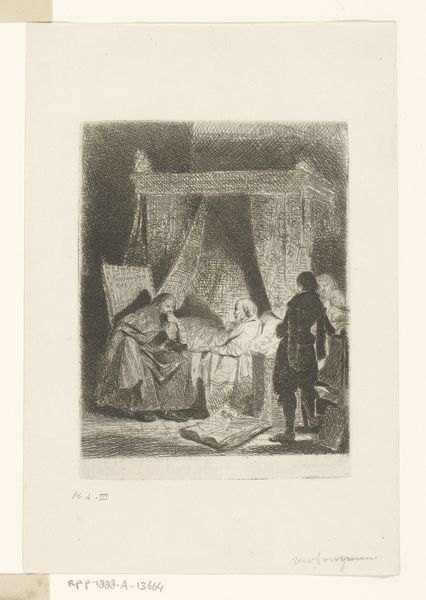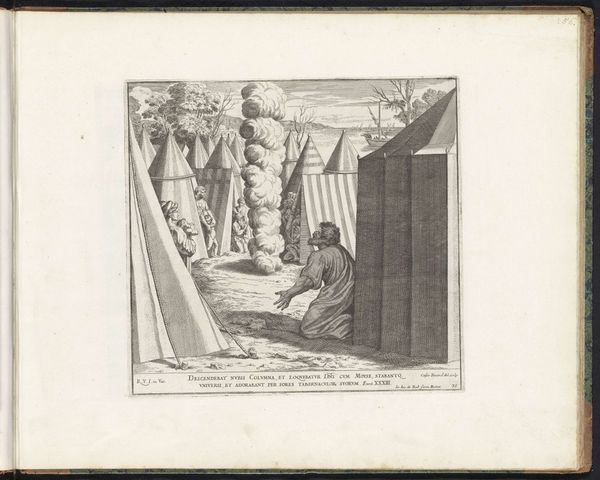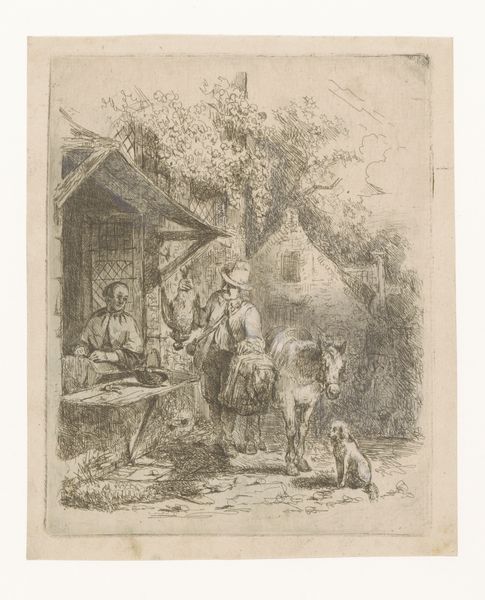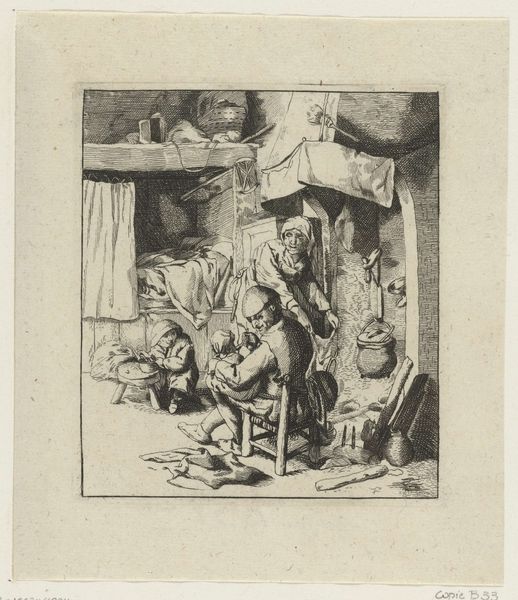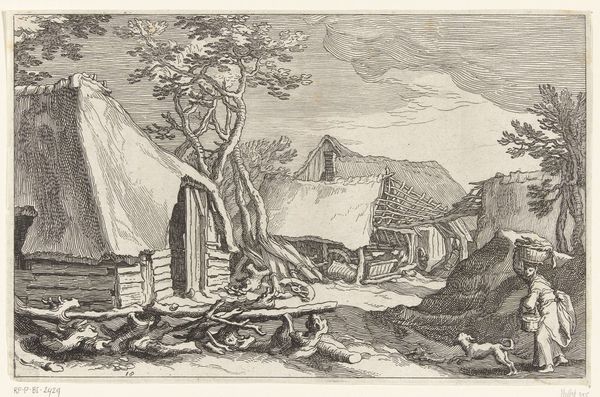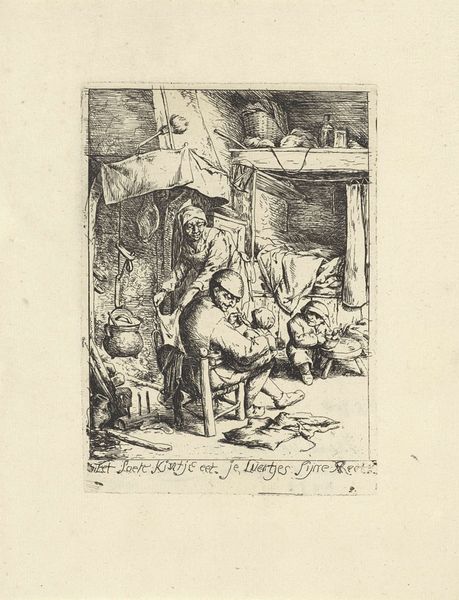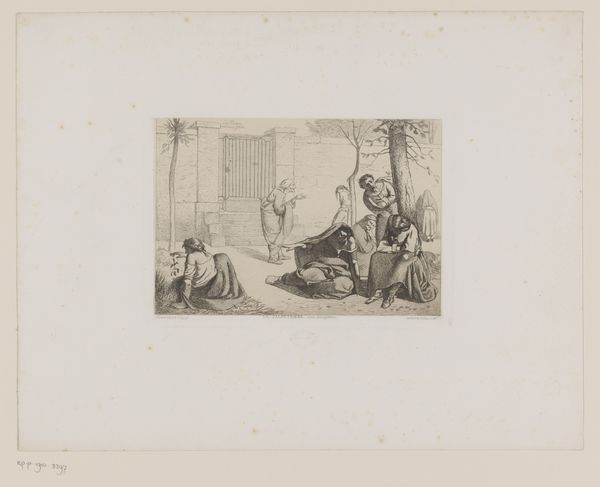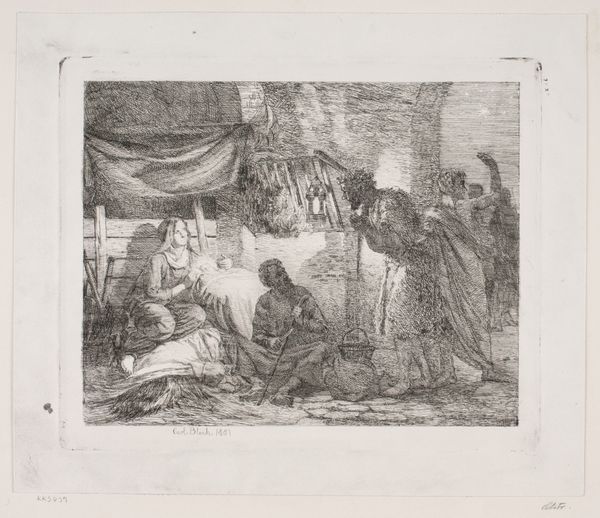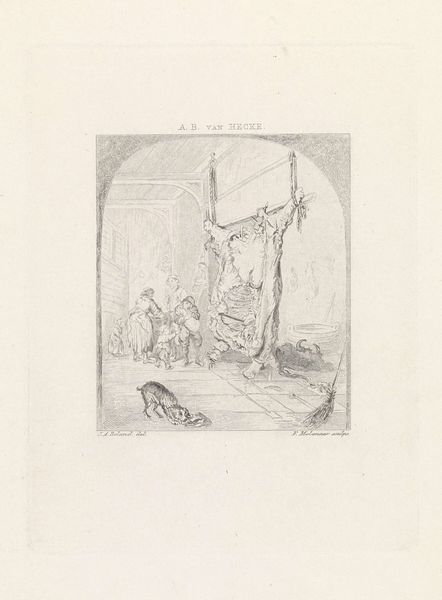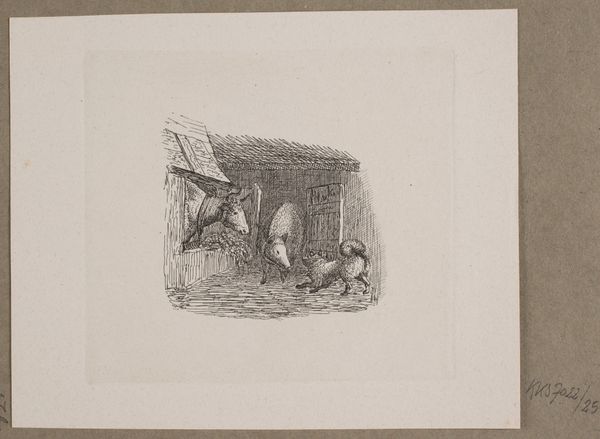
print, engraving
#
light pencil work
#
quirky sketch
#
baroque
# print
#
pencil sketch
#
sketch book
#
landscape
#
figuration
#
personal sketchbook
#
idea generation sketch
#
sketchwork
#
line
#
sketchbook drawing
#
history-painting
#
storyboard and sketchbook work
#
sketchbook art
#
engraving
Dimensions: height 130 mm, width 178 mm
Copyright: Rijks Museum: Open Domain
Editor: Here we have Giovanni Lanfranco’s engraving, "God Appears to Moses in a Pillar of Cloud," from 1607. It’s fascinating how Lanfranco depicted this epic biblical moment using just line work. What really strikes me is the dramatic contrast between the detail in the foreground and the almost hazy background. What stands out to you in this piece? Curator: The image offers us insight into the public role of religious imagery in the 17th century. This work was created in the wake of the Counter-Reformation, when the Catholic Church actively promoted art that reinforced biblical narratives and the authority of scripture. Notice how the composition uses a centralized pillar of smoke to stage the divine encounter, drawing the viewer's eye to the core narrative and reasserting religious dogma through visual means. Editor: So, the church was using art as propaganda, in a way? Curator: Precisely. This engraving isn’t merely an illustration; it’s a carefully constructed visual argument intended to reinforce religious belief in a specific socio-political context. Also consider, what might the intended audience make of Moses's hunched pose and open palms? How does that resonate with existing power structures of the time? Editor: It almost looks like an expression of both awe and submission before a powerful authority. I guess that connects to the religious and social structures you mentioned. Curator: Exactly. Lanfranco utilizes established visual cues to position Moses within a hierarchical framework. Thinking about its place in the broader history of religious art, it reflects how institutions utilized and shaped artistic expression for their own purposes. What do you take away from how images like this may influence viewers? Editor: I see how understanding the historical and cultural forces behind an artwork like this can completely change the way you interpret its meaning and the impact it had on the public. I'll definitely be looking at art differently now!
Comments
No comments
Be the first to comment and join the conversation on the ultimate creative platform.
